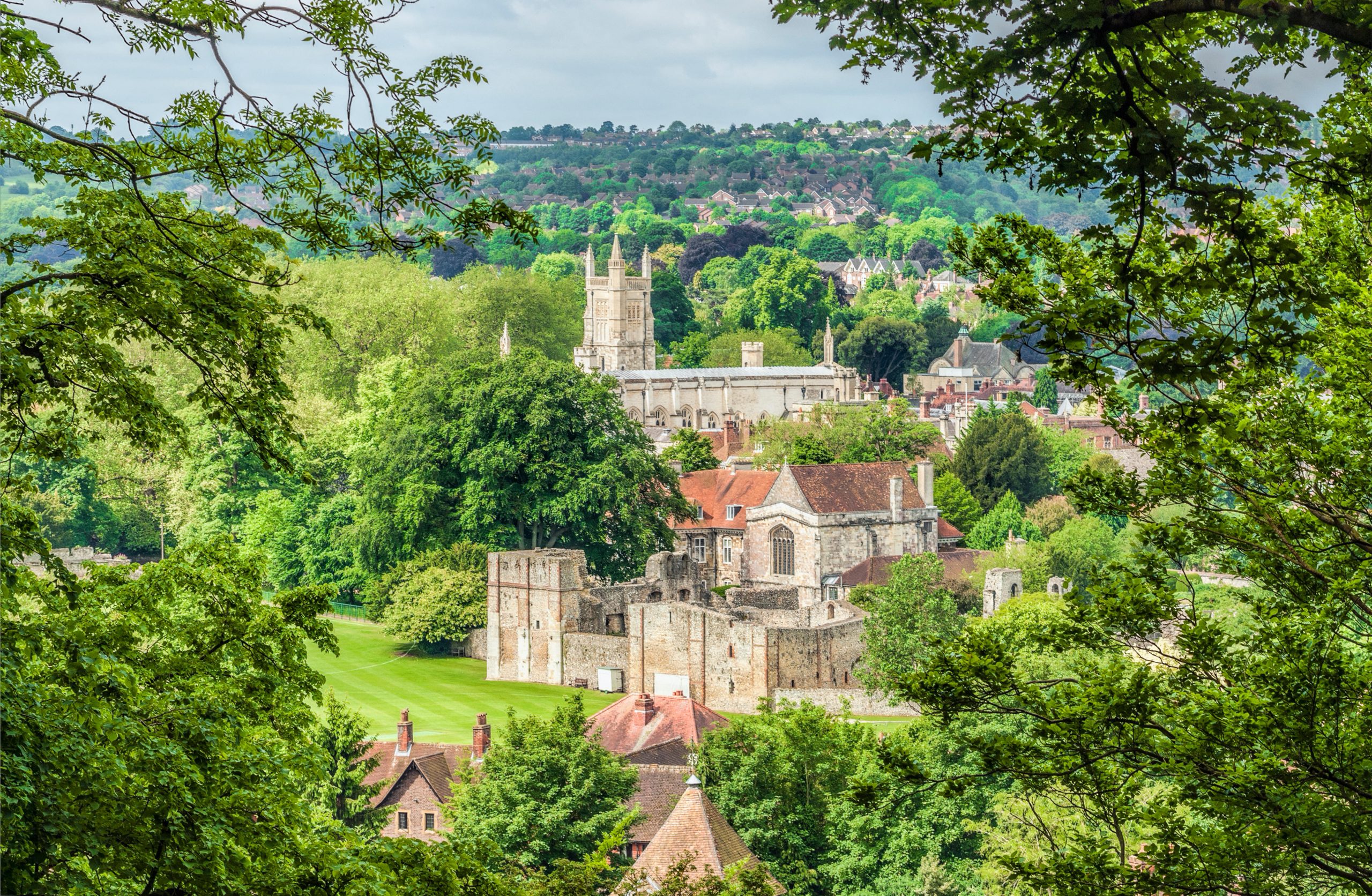Walking Winchester: Mystery and intrigue, extraordinary beauty and historic survivals
Fiona Reynolds walks in, through and around Winchester, a place which shows how city and country could come closer together.


Winchester is a city of history, mystery and intrigue, as well as extraordinary beauty, character and historic survivals: there is little post-war vandalism and, in every nook and cranny, an ancient building lives on. Living on, too, are legends, whether of King Arthur’s Round Table, King Alfred’s burnt cakes or simply that, as England’s capital until 1066, Winchester has always exerted a gravitational pull. Even more striking is the intimacy of its connection with Nature. It sits astride the River Itchen and its water meadows; the Iron Age hill fort of St Catherine’s Hill stands sentinel and walkable right above it.
My memories of Winchester, however, are of the fight about the M3. Today, it slices past Winchester in a deep cutting, crudely separating it from Twyford Down; the choice of that route triggered a huge campaign in the early 1990s. I remember it well, as the CPRE — for which I then worked — was one of the players in the Battle of Twyford Down.
This is a walk about country and city, and how — especially now — they must mesh ever closer together. Sustainable land uses will lead to clean water, healthy food production, thriving Nature and places for people to enjoy.

We begin in the water meadows south of the city and walk up Kingsgate Road with its fine Georgian frontages to the King’s Gate, the old entrance to the Royal Palace, marvelling at the tiny church of St Swithun tucked into its side. Through it is the cathedral; from the outside, it is squat and grey, but we catch our breath at the interior, inspired by its glorious, soaring nave. Passing through the Closes, we pause by the Butter Cross, a 15th-century, high-pinnacled market cross and a much-loved feature of the High Street.
We continue north to find the once-vast Hyde Abbey. Although destroyed after the Dissolution of the Monasteries in 1538, it originally outclassed the cathedral itself. Beginning life as the New Minster, it was moved to Hyde, beyond the city walls, and was consecrated as a Benedictine monastery in 1110. Lost (all but the gatehouse), but not forgotten: a beautiful garden helps the visitor reimagine the altar end of the nave, overlooking the river.
Turning south again, we follow the river through the heart of the city. We pass Winchester City Mill, lovingly looked after by the National Trust, and the ruins of Wolvesey Palace behind ancient walls, to join the green, riverside walks, where there are plans to restore grazing and the rich habitats of the chalkstream landscape.

Here we find another — perhaps the finest — of Winchester’s religious settlements. The 12th-century St Cross Hospital is an ‘almshouse of noble poverty’, which still accommodates 25 elderly Brothers in spectacular quarters, with a cathedral-like church, gate tower, hospital, hall, kitchen and master’s house, astoundingly superb buildings nestling in the water meadows.
Sign up for the Country Life Newsletter
Exquisite houses, the beauty of Nature, and how to get the most from your life, straight to your inbox.
All this while, however, I’ve been looking upwards, to St Catherine’s Hill, so from St Cross’s bridge we walk up to Twyford Down, under the M3 and through the golf course to the chalk downland of the South Downs National Park. A lark sings and the first spring flowers are pushing through the springy turf, but our joy is curtailed as we approach the M3’s cutting, which is full of cars, yellow warning signs and noise.

We scurry over the bridge, back across the motorway, and onto St Catherine’s Hill, striding towards the clump of trees on its top. Winchester is laid out below us and we have fun picking out the sights we’ve seen. I see, too, that by driving the motorway through the cutting, it was possible to remove the dual carriageway that once severed the city from the hill and avoided building a road through the precious water meadows.
I hear that there are proposals, gathering momentum, to ‘roof’ the cutting and restore the downland, as has been done so successfully at the Devil’s Punch Bowl at Hindhead in Surrey. Perhaps Winchester residents will once again be able to walk direct to Twyford Down, all within sight and sound of the cathedral bells.

The best small cities across Britain are booming, as buyers flock to Winchester and Bath
Buyers aren't just leaving Britain's biggest cities for countryside idyll, according to the latest research — they're also heading to smaller

Six of the finest and most liveable cathedral cities and towns in Britain
Britain’s cathedral towns and cities are beautiful to look at, great to live in and well worthy of investment. Eleanor

Credit: Strutt and Parker
Best country houses for sale this week
An irresistible West Country cottage and a magnificent Cumbrian country house make our pick of the finest country houses for
Fiona Reynolds is chair of the Food, Farming and Countryside Commission, the former director-general of the National Trust, former Master of Emmanuel College, Cambridge, and the author of The Fight for Beauty. Follow her on Twitter @fionacreynolds.
-
 Designer's Room: A solid oak French kitchen that's been cleverly engineered to last
Designer's Room: A solid oak French kitchen that's been cleverly engineered to lastKitchen and joinery specialist Artichoke had several clever tricks to deal with the fact that natural wood expands and contracts.
By Amelia Thorpe
-
 Chocolate eggs, bunnies and the Resurrection: Country Life Quiz of the Day, April 18, 2025
Chocolate eggs, bunnies and the Resurrection: Country Life Quiz of the Day, April 18, 2025Friday's quiz is an Easter special.
By James Fisher